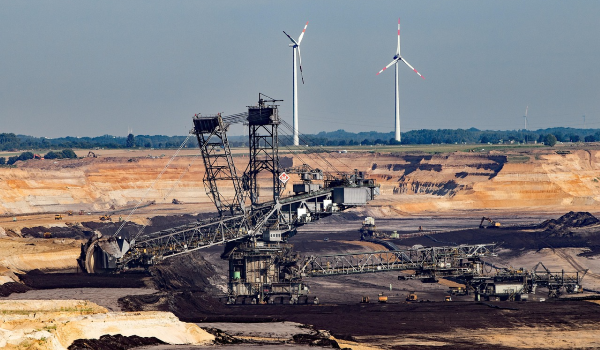What Defines the Material Industry Sector?
The material industry sector serves as a cornerstone of the global economy, encompassing companies dedicated to the discovery, development, and processing of essential raw materials. These firms are instrumental in transforming natural resources into usable products, ranging from metals and chemicals to forestry goods. By providing fundamental inputs, the materials sector fuels industries such as construction, manufacturing, and technology, supporting economic growth and development on a global scale.
Within this sector, companies specialize in various activities, including mining and refining metals, producing chemical compounds, and harvesting forestry products. These processes ensure a steady supply of indispensable materials, like steel and concrete, that drive infrastructure projects worldwide. Chemical products manufactured within this sector also play a pivotal role in industries such as agriculture, healthcare, and energy, highlighting the sector's immense versatility and importance.
A significant contribution of the materials industry lies in its support for the construction sector. Materials such as lumber, cement, and steel—supplied by firms within this sector—are essential for building homes, bridges, and skyscrapers. The sector's impact extends far beyond construction, underpinning advancements in emerging industries like renewable energy and innovative materials. As the backbone of infrastructure development, the materials sector continues to adapt and innovate, ensuring its relevance in an ever-evolving global economy.
Material Sector Characteristics and Trends
The material industry sector is inherently cyclical, with its performance closely linked to broader economic conditions and demand for raw materials. During periods of economic growth, the demand for construction materials, metals, and chemicals tends to surge, boosting the sector's revenues and profitability. Conversely, economic slowdowns or recessions often result in reduced demand for these essential inputs, leading to declines in production and revenue. As a result, the sector's success is tightly intertwined with global industrial and infrastructural activities.
One of the defining characteristics of the materials sector is its susceptibility to volatility in commodity prices and supply-and-demand dynamics. Fluctuations in raw material prices, driven by factors such as geopolitical tensions or changes in global supply chains, can significantly impact the profitability of companies in this sector. Additionally, shifts in demand from industries like automotive, construction, and technology can create unpredictable market conditions, challenging even the most established firms to adapt quickly and effectively.
Government policies and regulatory frameworks play a critical role in shaping trends within the materials sector. Environmental sustainability measures, such as carbon emissions regulations and incentives for green production, are driving companies to adopt more eco-friendly practices. Similarly, trade policies and tariffs can influence the flow of raw materials across borders, impacting supply chains and profit margins. The sector's sensitivity to changes in the business cycle, coupled with these regulatory factors, underscores the need for innovation and resilience to navigate an ever-evolving economic and regulatory landscape.
Material Sub-Sectors and Industries
The materials sector comprises diverse sub-sectors, each playing a pivotal role in supplying essential resources across industries. One key sub-sector is chemicals, which includes companies involved in the production of chemicals, plastics, and specialty materials. These firms create products used in agriculture, healthcare, manufacturing, and technology. From fertilizers and adhesives to advanced polymers, the chemicals sub-sector provides versatile solutions that drive innovation and support economic growth.
Metals and mining is another critical sub-sector within the materials industry, encompassing companies focused on the extraction and processing of metals and minerals. This sub-sector supplies crucial raw materials like iron ore, copper, and gold, which are indispensable for sectors such as construction, electronics, and energy. Metals and mining firms often operate in global markets, navigating challenges like commodity price fluctuations and environmental regulations to meet the growing demand for resources in an increasingly industrialized world.
The construction materials and containers & packaging sub-sectors also play a significant role in the materials industry. Construction materials companies produce vital building components such as cement, steel, and lumber, which form the backbone of infrastructure projects worldwide. Meanwhile, containers & packaging firms specialize in creating storage solutions from metal, glass, and plastic, serving industries such as food, beverage, and pharmaceuticals. Together, these sub-sectors underscore the materials industry's wide-reaching impact on everyday life and its critical role in global supply chains.
Investing in the Material Sector
The material sector presents a promising opportunity for long-term growth, fueled by the consistent and growing demand for raw materials across industries. As global economies expand and infrastructure projects accelerate, materials such as metals, chemicals, and construction products become increasingly indispensable. Investors eyeing the sector can find potential in companies poised to benefit from this upward trajectory, making it an appealing choice for those seeking stable yet growth-oriented investment opportunities.
When evaluating stocks within the material sector, investors should account for several key factors, including the economic cycle, policy developments, and supply-and-demand profiles. Economic growth generally boosts demand for materials, while recessions may result in a slowdown. Additionally, government policies related to environmental sustainability and trade can influence the sector's dynamics. Understanding these elements allows investors to make informed decisions, identifying stocks with the resilience and adaptability needed to thrive amidst changing conditions.
One notable catalyst for growth in the material sector is a decline in interest rates, which can spur economic activity and fuel demand for raw materials. Furthermore, compelling supply-and-demand trends within specific sub-sectors, such as metals or chemicals, may create attractive setups for select stocks. This combination of favorable macroeconomic conditions and industry-specific dynamics positions the materials sector as a potential stronghold for investors seeking opportunities in a fluctuating yet promising market landscape.
Key Players and Examples in the Material Sector
Prominent companies like Rio Tinto, BHP Group, and DuPont are key players in the material industry sector, showcasing their market strength and influence. Rio Tinto and BHP Group focus primarily on mining and the extraction of metals such as iron ore, copper, and aluminum, which are critical to global infrastructure and technology advancements. Meanwhile, DuPont, a leader in chemical manufacturing, provides innovative materials for sectors ranging from agriculture to electronics, highlighting the diverse applications of the materials industry.
Exxon Mobil holds the distinction of being the largest publicly traded basic materials company in the world. With its vast operations in petrochemicals and raw materials, the company plays a vital role in energy production and industrial supply chains. Its extensive market presence underscores the significant role of large-scale enterprises in shaping the landscape of the materials sector, meeting global demands across various industries, and driving innovation within the field.
Emerging markets, particularly in regions like Africa, have significantly boosted their economies by leveraging natural resources. The exploitation of raw materials such as precious metals, oil, and minerals has been a primary driver of economic growth for many countries. As global demand for these resources continues to rise, emerging markets are becoming key contributors to the materials industry, further reinforcing the sector's global significance and economic impact.
Conclusion
The material industry sector stands as a vital foundation of the global economy, driving progress through the discovery, development, and processing of essential raw materials. With its diverse sub-sectors, including chemicals, metals and mining, construction materials, and containers and packaging, the industry plays a critical role in supporting infrastructure, manufacturing, and technological advancements. Key players such as Rio Tinto, BHP Group, DuPont, and Exxon Mobil exemplify the sector's extensive market influence and its ability to meet growing global demands.
Investing in the material sector offers promising opportunities for long-term growth, provided investors carefully consider factors such as economic cycles, policy developments, and supply-and-demand dynamics. As global economies expand and interest rates fluctuate, the sector's potential for innovation and resilience becomes increasingly compelling. Emerging markets, particularly in regions like Africa, further underscore the sector's significance by contributing to global supply chains through their abundant natural resources.
Ultimately, the materials industry remains an essential driver of economic and industrial development. From meeting fundamental infrastructure needs to supporting emerging trends in sustainability and technological innovation, the sector's versatility and adaptability ensure its continued relevance and impact across the global economic landscape.





























What Defines the Material Industry Sector?
The material industry sector serves as a cornerstone of the global economy, encompassing companies dedicated to the discovery, development, and processing of essential raw materials. These firms are instrumental in transforming natural resources into usable products, ranging from metals and chemicals to forestry goods. By providing fundamental inputs, the materials sector fuels industries such as construction, manufacturing, and technology, supporting economic growth and development on a global scale.
Within this sector, companies specialize in various activities, including mining and refining metals, producing chemical compounds, and harvesting forestry products. These processes ensure a steady supply of indispensable materials, like steel and concrete, that drive infrastructure projects worldwide. Chemical products manufactured within this sector also play a pivotal role in industries such as agriculture, healthcare, and energy, highlighting the sector's immense versatility and importance.
A significant contribution of the materials industry lies in its support for the construction sector. Materials such as lumber, cement, and steel—supplied by firms within this sector—are essential for building homes, bridges, and skyscrapers. The sector's impact extends far beyond construction, underpinning advancements in emerging industries like renewable energy and innovative materials. As the backbone of infrastructure development, the materials sector continues to adapt and innovate, ensuring its relevance in an ever-evolving global economy.
Material Sector Characteristics and Trends
The material industry sector is inherently cyclical, with its performance closely linked to broader economic conditions and demand for raw materials. During periods of economic growth, the demand for construction materials, metals, and chemicals tends to surge, boosting the sector's revenues and profitability. Conversely, economic slowdowns or recessions often result in reduced demand for these essential inputs, leading to declines in production and revenue. As a result, the sector's success is tightly intertwined with global industrial and infrastructural activities.
One of the defining characteristics of the materials sector is its susceptibility to volatility in commodity prices and supply-and-demand dynamics. Fluctuations in raw material prices, driven by factors such as geopolitical tensions or changes in global supply chains, can significantly impact the profitability of companies in this sector. Additionally, shifts in demand from industries like automotive, construction, and technology can create unpredictable market conditions, challenging even the most established firms to adapt quickly and effectively.
Government policies and regulatory frameworks play a critical role in shaping trends within the materials sector. Environmental sustainability measures, such as carbon emissions regulations and incentives for green production, are driving companies to adopt more eco-friendly practices. Similarly, trade policies and tariffs can influence the flow of raw materials across borders, impacting supply chains and profit margins. The sector's sensitivity to changes in the business cycle, coupled with these regulatory factors, underscores the need for innovation and resilience to navigate an ever-evolving economic and regulatory landscape.
Material Sub-Sectors and Industries
The materials sector comprises diverse sub-sectors, each playing a pivotal role in supplying essential resources across industries. One key sub-sector is chemicals, which includes companies involved in the production of chemicals, plastics, and specialty materials. These firms create products used in agriculture, healthcare, manufacturing, and technology. From fertilizers and adhesives to advanced polymers, the chemicals sub-sector provides versatile solutions that drive innovation and support economic growth.
Metals and mining is another critical sub-sector within the materials industry, encompassing companies focused on the extraction and processing of metals and minerals. This sub-sector supplies crucial raw materials like iron ore, copper, and gold, which are indispensable for sectors such as construction, electronics, and energy. Metals and mining firms often operate in global markets, navigating challenges like commodity price fluctuations and environmental regulations to meet the growing demand for resources in an increasingly industrialized world.
The construction materials and containers & packaging sub-sectors also play a significant role in the materials industry. Construction materials companies produce vital building components such as cement, steel, and lumber, which form the backbone of infrastructure projects worldwide. Meanwhile, containers & packaging firms specialize in creating storage solutions from metal, glass, and plastic, serving industries such as food, beverage, and pharmaceuticals. Together, these sub-sectors underscore the materials industry's wide-reaching impact on everyday life and its critical role in global supply chains.
Investing in the Material Sector
The material sector presents a promising opportunity for long-term growth, fueled by the consistent and growing demand for raw materials across industries. As global economies expand and infrastructure projects accelerate, materials such as metals, chemicals, and construction products become increasingly indispensable. Investors eyeing the sector can find potential in companies poised to benefit from this upward trajectory, making it an appealing choice for those seeking stable yet growth-oriented investment opportunities.
When evaluating stocks within the material sector, investors should account for several key factors, including the economic cycle, policy developments, and supply-and-demand profiles. Economic growth generally boosts demand for materials, while recessions may result in a slowdown. Additionally, government policies related to environmental sustainability and trade can influence the sector's dynamics. Understanding these elements allows investors to make informed decisions, identifying stocks with the resilience and adaptability needed to thrive amidst changing conditions.
One notable catalyst for growth in the material sector is a decline in interest rates, which can spur economic activity and fuel demand for raw materials. Furthermore, compelling supply-and-demand trends within specific sub-sectors, such as metals or chemicals, may create attractive setups for select stocks. This combination of favorable macroeconomic conditions and industry-specific dynamics positions the materials sector as a potential stronghold for investors seeking opportunities in a fluctuating yet promising market landscape.
Key Players and Examples in the Material Sector
Prominent companies like Rio Tinto, BHP Group, and DuPont are key players in the material industry sector, showcasing their market strength and influence. Rio Tinto and BHP Group focus primarily on mining and the extraction of metals such as iron ore, copper, and aluminum, which are critical to global infrastructure and technology advancements. Meanwhile, DuPont, a leader in chemical manufacturing, provides innovative materials for sectors ranging from agriculture to electronics, highlighting the diverse applications of the materials industry.
Exxon Mobil holds the distinction of being the largest publicly traded basic materials company in the world. With its vast operations in petrochemicals and raw materials, the company plays a vital role in energy production and industrial supply chains. Its extensive market presence underscores the significant role of large-scale enterprises in shaping the landscape of the materials sector, meeting global demands across various industries, and driving innovation within the field.
Emerging markets, particularly in regions like Africa, have significantly boosted their economies by leveraging natural resources. The exploitation of raw materials such as precious metals, oil, and minerals has been a primary driver of economic growth for many countries. As global demand for these resources continues to rise, emerging markets are becoming key contributors to the materials industry, further reinforcing the sector's global significance and economic impact.
Conclusion
The material industry sector stands as a vital foundation of the global economy, driving progress through the discovery, development, and processing of essential raw materials. With its diverse sub-sectors, including chemicals, metals and mining, construction materials, and containers and packaging, the industry plays a critical role in supporting infrastructure, manufacturing, and technological advancements. Key players such as Rio Tinto, BHP Group, DuPont, and Exxon Mobil exemplify the sector's extensive market influence and its ability to meet growing global demands.
Investing in the material sector offers promising opportunities for long-term growth, provided investors carefully consider factors such as economic cycles, policy developments, and supply-and-demand dynamics. As global economies expand and interest rates fluctuate, the sector's potential for innovation and resilience becomes increasingly compelling. Emerging markets, particularly in regions like Africa, further underscore the sector's significance by contributing to global supply chains through their abundant natural resources.
Ultimately, the materials industry remains an essential driver of economic and industrial development. From meeting fundamental infrastructure needs to supporting emerging trends in sustainability and technological innovation, the sector's versatility and adaptability ensure its continued relevance and impact across the global economic landscape.